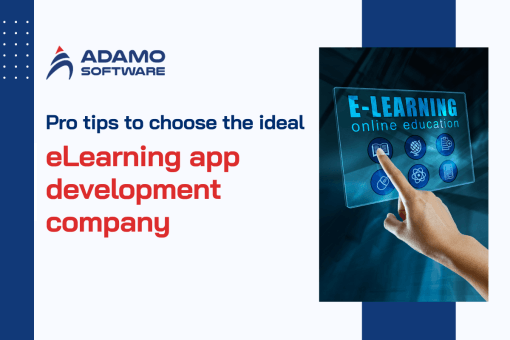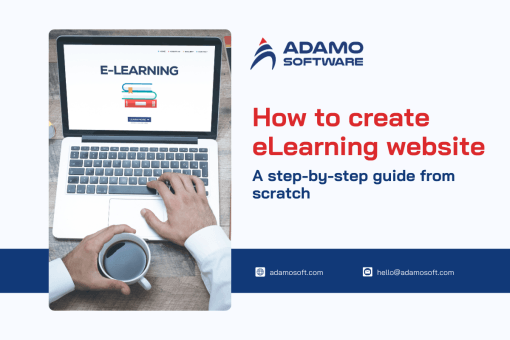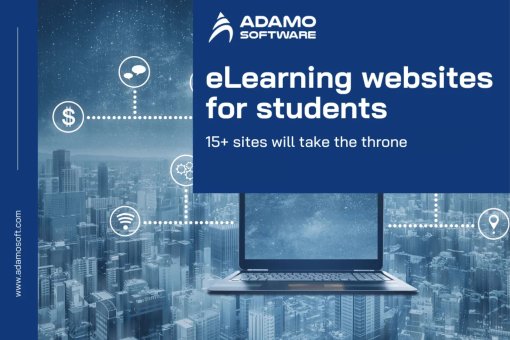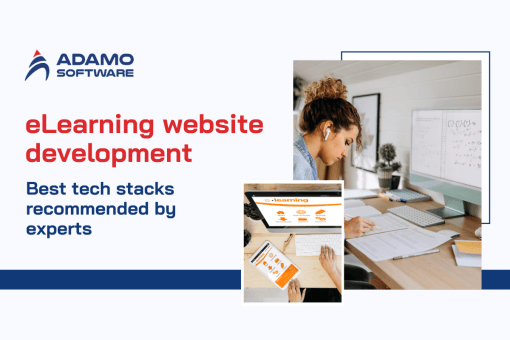How to estimate the cost of Online learning platforms for schools
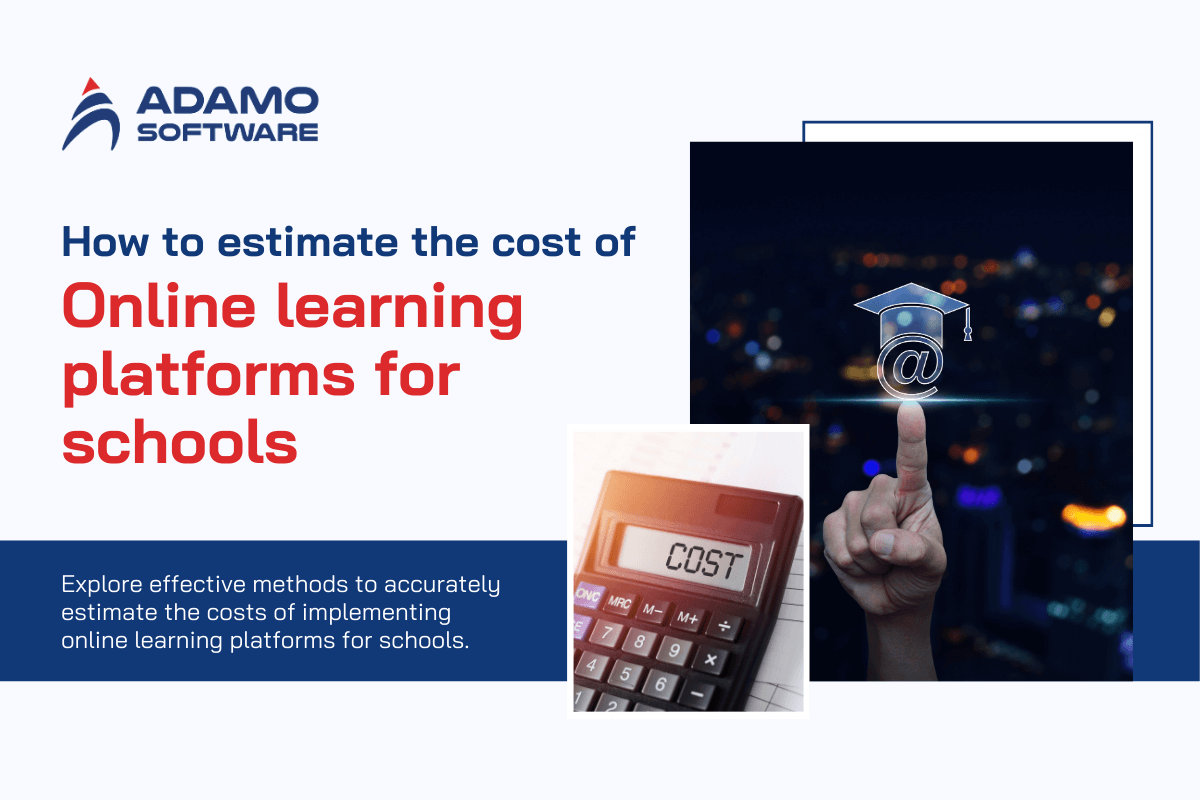
Online learning platforms for schools have become increasingly popular in recent years. Especially during the Covid-19 pandemic, all students were forced to switch to online learning. This increased its popularity and user demand. However, its effects are still evident today. However, its effects still exist today. Thanks to advances in educational technology and high-speed internet access, distance learning has become more popular and accessible.
Students at all levels, including those in corporate training, are using the Internet to search for educational materials. Therefore, online learning platforms for schools are the place to connect students with course content, instructors, and classmates.
In this article, we will discuss the estimated cost of building online learning platforms for schools and what factors determine the price. To help you in gaining an overview of building an online learning platform.
I. Must-have features of online learning platforms for school
Online learning platforms for schools must include essential features to ensure effective teaching. Here are the 10 must-have features of platforms for schools:

1. User-Friendly Interface
We must have an interface that is easy to use and has clear instructions. Icons and text need to be simple and clear to comprehend. A friendly and intuitive interface makes it easy for students and teachers to navigate through the features.
When teachers design a course, they need to use the software effectively. Therefore, the tool should be designed so that people who do not know how to program can use and operate it easily.
Everything should be smooth and adjusted to enhance students’ learning experience. Students should be able to log in quickly with just one step, or easily access learning resources with just a few simple steps.
Remember, if the online learning platforms for schools are not easy to use, users will not choose to use them. No matter what the platform offers, it will not be effective if learners cannot access online courses and content. Therefore, the entire learner and teacher experience must be smooth, simple, and personalized.
2. Real-Time Communication
Online learning platforms for schools should provide real-time communication features like instant massage and video conferencing.
These tools are essential for online classrooms because they allow teachers and students to interact instantly. Students can ask questions, get quick answers, and participate in discussions without wasting time.
Additionally, teachers can provide immediate feedback and explanations, allowing students to get answers quickly and find the right answer. This real-time communication feature makes the learning environment more interactive and engaging.
3. Offline Reading
Building offline-capable online learning platforms for schools will revolutionize learning. This is because it allows continuous access to course content, lectures, and quizzes, regardless of internet connectivity. This feature supports users in areas with unreliable or limited internet connectivity, ensuring a seamless educational experience.
We don’t always have Wi-Fi access. So even if it is an online education platform, it must be accessible offline. Students may want to download some content and read it later. In case there is no internet connection, students cannot interrupt their learning. So, it is imperative to have an option to allow users to download content and read it offline.
4. Cloud Hosting
It is important to ensure that the platform is cloud-based, and that all data is stored in the cloud. Using a cloud platform has many benefits. It includes scalability, enhanced security, and easy access anytime, anywhere.
This method offers more practical solutions than traditional online platforms. Especially when high-speed internet is widely available, and mobile devices are widely used. Therefore, students and teachers no longer worry about losing data on USB drives or dealing with hardware failures.
With the cloud hosting feature, everything is securely stored and backed up. Accessing important information and files from any device is also much easier. This ensures a smooth and uninterrupted teaching and learning experience.
5. Interactive Magic
It would be great if your online learning platforms for schools could include some interactive elements. Online features include interactive whiteboards, chat rooms, and multimedia content. These tools make online learning even better. There are various tools available, such as quizzes, audio files, videos, simulations, games, and more. These features will let students easily take notes, share them with friends or teachers, bookmark pages, search for information, highlight text, and more.
These cool features encourage students to get involved and participate in the courseware. So, it would be a good idea to include these fun interactive features on your online learning platforms for schools.
6. Assessment Tools
Assessments and tests play a crucial role in the learning process. Ensure the online learning platforms for schools can create a variety of tests to assess and track student progress. This can include tracking test scores, assignment completion, and grading.
You can have a variety of tests, such as drag and drop, matching, summary response, labeling, multiple choice, fill-in-the-blank, and more. The platform should also allow teachers to add tests anywhere in the course module, at the end of each chapter, or between chapters. It should also allow teachers to review assessments and provide feedback online.
7. Analytics Insights
Online learning platforms for schools need an analytics tool that can measure the effectiveness of their curriculum and teaching. Analytics provide insights into each student’s learning process. Teachers can track student performance, spot trends, and adjust their teaching strategies.
In addition, with analytics, teachers can gain insights into what each student is learning, what percentage of the course they have completed, and more. This information helps teachers improve their teaching methods, and redesign course content to suit each student. It even allows them to pay more attention to students who need help.
8. Comprehensive Course Management
A platform should have robust course management features. Features that make the online learning experience smooth and seamless. With this feature, teachers can easily upload course materials such as lectures and readings. It allows them to create and manage homework, set deadlines, and collect student assignments online.
Besides, it can help teachers track student progress in the course, track test scores, and take attendance. Overall, these features of online learning platforms for schools make it easier for teachers to organize their courses and lectures. It also helps students keep up with their learning progress.
9. Device Flexibility
An ideal e-learning platform for schools should work seamlessly on all types of devices and be compatible with a wide range of devices. Make sure that users do not see messages like “Sorry, this content is not compatible with your device.”
An ideal e-learning platform for schools should be accessible on a variety of devices, including smartphones, tablets, laptops, and wearables.
Overall, the essence of an e-learning platform for schools is device flexibility. This flexibility allows learners to access their courses whenever and wherever they choose. It prevents learners from being restricted by the type of device they are using. This adaptability is the golden key to a seamless learning experience.
10. Content Security
The online learning platforms must have strong security features to ensure that teachers’ and students’ data and financial information are safe.
In addition, the platform must-have features that provide complete control over the content. It must have Content Security and Digital Rights Management (DRM) to protect intellectual property. To ensure that content is not used and downloaded without permission, students can encrypt e-books with DRM protection. This will ensure that only users with access codes can view the materials or courses.
Also read: Online learning platforms for students: Advantages and tips for the perfect fit
II. Factors Influencing eLearning Platform Development Costs
The cost of developing online learning platforms for schools depends on several factors. To manage costs effectively, you should have a clear plan and a strategic development approach.
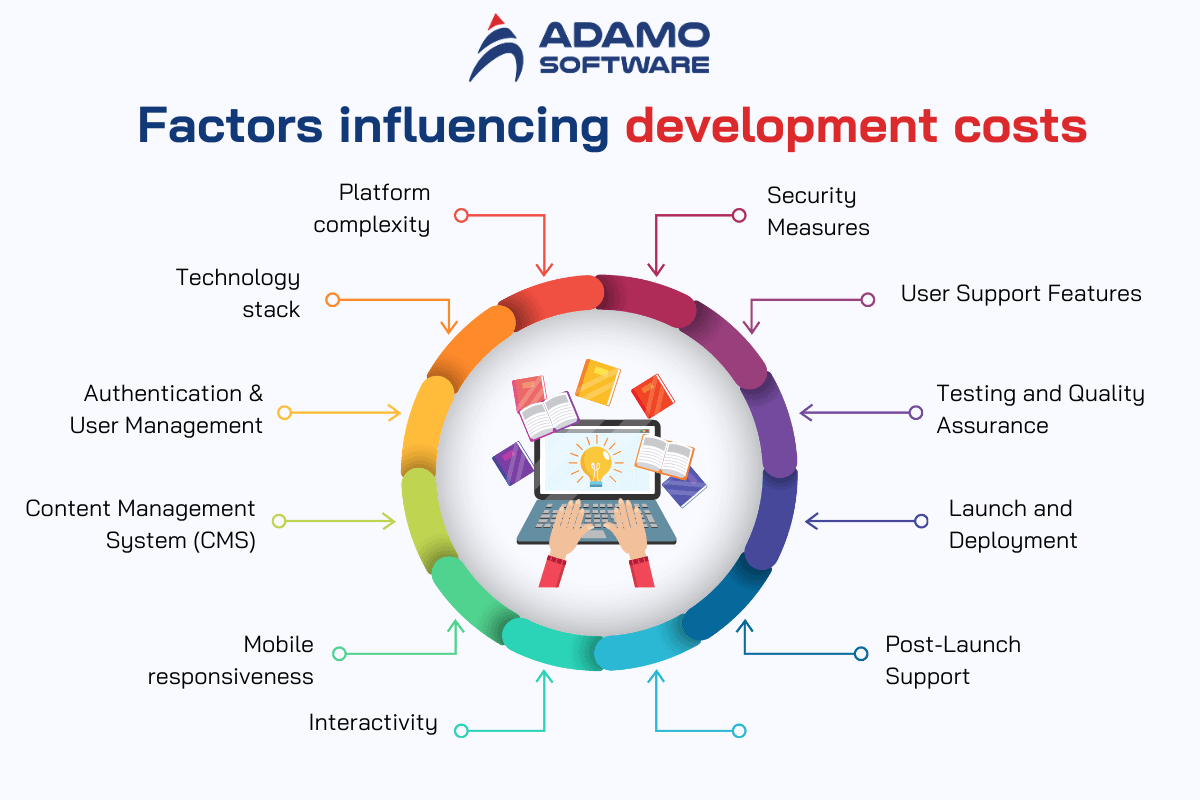
1. Platform Complexity
Basic Platform: A simple platform with essential basic features such as user authentication, content distribution, and basic assessment.
Intermediate Platform: Additional features on demand such as interactive content, discussion forums, and collaboration tools.
Advanced Platform: Complex advanced functions such as adaptive learning algorithms, virtual labs, and extensive user interaction features.
2. Technology Stack
Programming Language: The choice of programming languages, frameworks, and libraries can affect development costs.
Cloud Hosting and Services: The choice of hosting services and cloud infrastructure affects scalability and operational costs.
3. Authentication and User Management
Secure Authentication: Implement strong authentication methods and secure user account management.
User profiles and data security: Develop features to manage, create user profiles, and ensure data security.
4. Content Management System (CMS)
Basic CMS: A simple system designed to manage, create, and update course content efficiently, making it easier to keep information current.
Advanced CMS: The system integrates many features including multimedia support, version control, and collaboration tools, improving team productivity and content quality.
5. Mobile responsiveness
Responsive design: Ensure the platform is accessible on multiple devices, with additional costs for developing dedicated mobile apps.
Cross-platform compatibility: Expand compatibility with a variety of operating systems and devices.
6. Interactivity
Quiz and assessments: Basic assessments quickly check to understand, while complex quizzes are designed to test deeper knowledge thoroughly.
Multimedia integration: Include videos, simulations, and game-like features in content to make it more fun and engaging for users.
7. Security Measures
Data Encryption: Implement strong security measures and use encryption to keep user data safe. Also, it is secure from unwanted access.
GDPR Compliance: Strict compliance with user privacy laws to keep their personal information safe and secure.
8 .User Support Features
Help Desk and FAQ: Compare basic user support features and handling simple requests. Advanced help functions help manage complex issues more comprehensively.
Chat Support: Implement live chat support or deploy chatbots to provide real-time support, ensuring users get immediate help for their problems.
9. Testing and Quality Assurance
Bug Testing: Rigorous testing to identify and fix bugs and glitches promptly to improve the quality of user experience.
User Acceptance Testing (UAT): Engage end-users in testing the platform to ensure it meets their expectations.
10. Launch and Deployment
Server Costs: Host your platform on reliable servers. These servers are designed with scalability in mind to ensure smooth performance as user demand increases.
Implementation Costs: These costs ensure a seamless transition from development to live use. This ensures users do not experience any disruptions or issues during use.
11. Post-Launch Support
Maintenance: Provide ongoing support to fix bugs quickly. Also, update features and resolve any new issues that arise, ensuring a reliable user experience.
User Support Services: Provide comprehensive customer support services to resolve user inquiries and technical support, ensuring a smooth and convenient user experience.
III. How Much Does It Cost to Build an online learning Portal like Udemy or Coursera?

The development of online learning platforms for schools like Coursera or Udemy can cost anywhere from $70,000 to $105,000. If it is a fully customized eLearning website solution, it can cost up to $100,000. This price includes the cost of development from scratch, custom web design, QA testing, and project management.
The cost of developing online learning platforms for schools’ software MVP can range from $25,500 to $50,000. In addition to a dashboard, the minimum viable product should provide basic portal functionality. These include attendance management, database, and quiz formatting.
However, development costs also vary depending on the complexity of the Udemy or Coursera portal.
- A basic platform typically costs between $40,000 and $60,000
- An average platform can range from $60,000 to $150,000.
- For advanced and complex platforms, the budget can go up to around $300,000.
- However, to reduce the cost of developing your MOOC platform, you can use a white-label solution. This is a more budget-friendly approach without compromising on core functionality.
IV. How to hire a dedicated team to develop an e-learning platform?
Finding and researching how to hire the best and most dedicated online learning platforms for school developers is a difficult task. Here are some of the best tips to help you hire a dedicated team of developers for your project:
- First, analyze the market and check reviews on relevant websites to gather insights.
- Choose the right technology that best fits your project requirements.
- Seek referrals from your professional network to find reputable developers.
- Attending tech events to meet and identify skilled developers.
- Estimate your budget realistically to avoid overspending.
- Review the portfolios of potential candidates to evaluate their previous work.
- Ensure the essential tools and resources are available.
- Trust the programming expertise of the developers.
- Consider the character of the developers, not just their technical skills.
- Put technical knowledge above personal beliefs when making decisions.
You should ensure that your e-learning platform is efficient yet cost-effective, focusing on essential features while remaining competitive is key. A well-designed e-learning platform for schools requires a knowledgeable team with a deep understanding of education and technology.

Choosing Adamo Software’s dedicated development team is an effective solution. Because we provide flexibility and maintain quality throughout the project. With our dedicated professional team, your platform will skillfully meet educational challenges and enhance the student experience. This will keep you at the forefront of the dynamic education sector.
FAQs
1. How to create an e-learning platform and what tools are required?
Building an online learning platform for schools requires clear goals, the right development team, and dedicated developers.
In particular, the platform requires essential tools. These may include automation, gamification elements to increase engagement, responsive design for multiple devices, and a secure cloud infrastructure to store data.
2. Problems an e-learning platform faces while marketing?
Marketing online learning platforms for schools can be challenging. A major hurdle is finding a team of highly qualified educators who can develop quality, engaging content.
Additionally, you need to come up with fresh, innovative ideas to differentiate your platform from your competitors. On top of that, attracting users to a new platform can be a complex and time-consuming process that requires a well-defined and targeted marketing strategy.
3. How do you use an e-learning platform?
Online learning platforms for schools are designed to provide seamless control over various aspects of the learning process. Administrators can manage everything from user communication to content delivery. This makes the platform a hub for both teachers and learners.
These platforms provide learners with the opportunity to collaborate and develop new skills at their own pace. The flexible nature of e-learning platforms allows users to engage in a variety of learning activities, from interactive lessons to self-paced learning.
4. Best e-learning platform?
Today, several online learning platforms have established themselves as leaders. They offer a wide range of courses and professional certifications. For example, Coursera, Udemy, LinkedIn Learning, Skillshare, Udacity, and edX are some of the most popular platforms.
Each platform offers a variety of learning paths and professional certifications. From personal development to highly specialized skills, they cater to the needs of different types of learners.
5. How do I Monetize my education app?
There are many ways you can monetize your educational app. A popular approach is to offer freemium courses, where some content is free, but premium features require payment. In-app purchases, paid certifications, and live classes are additional methods of generating revenue.
These strategies can be easily managed and tailored to the needs of your target audience, making the app profitable while still providing value to learners.






